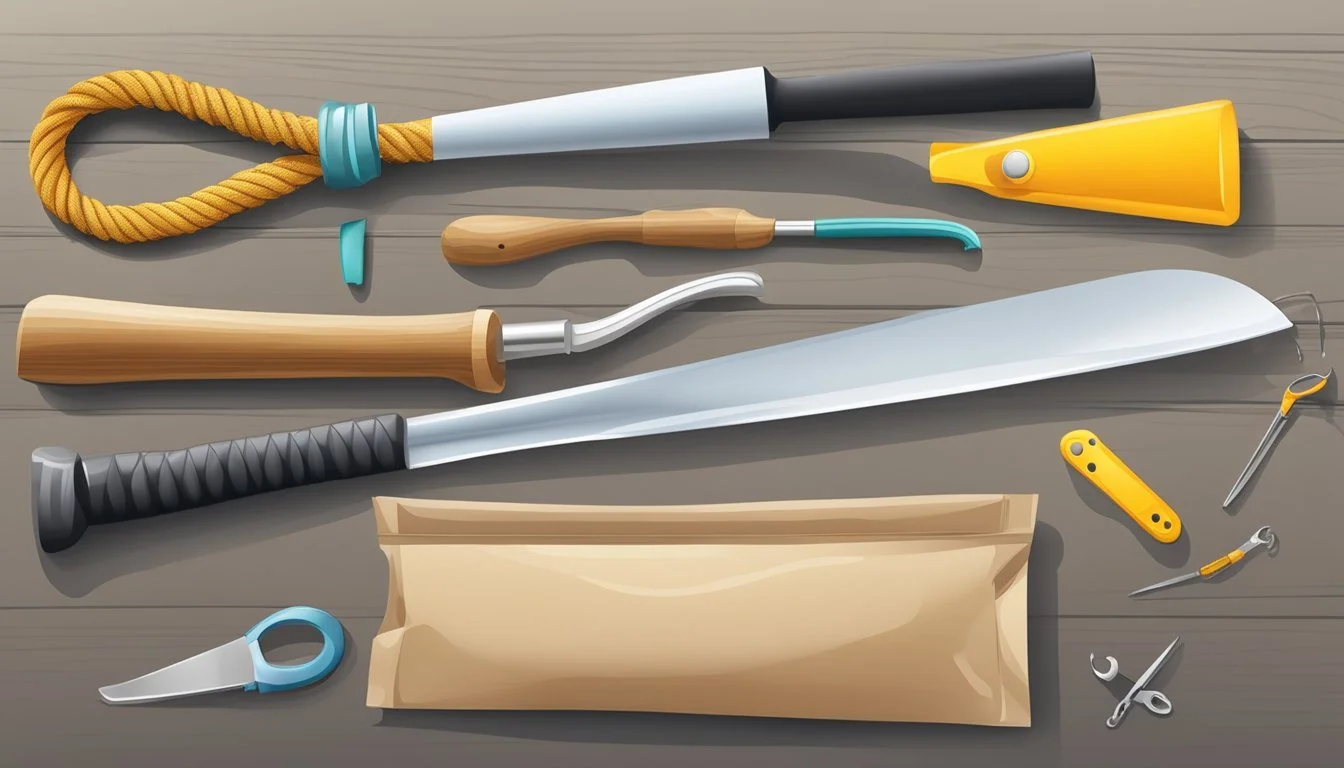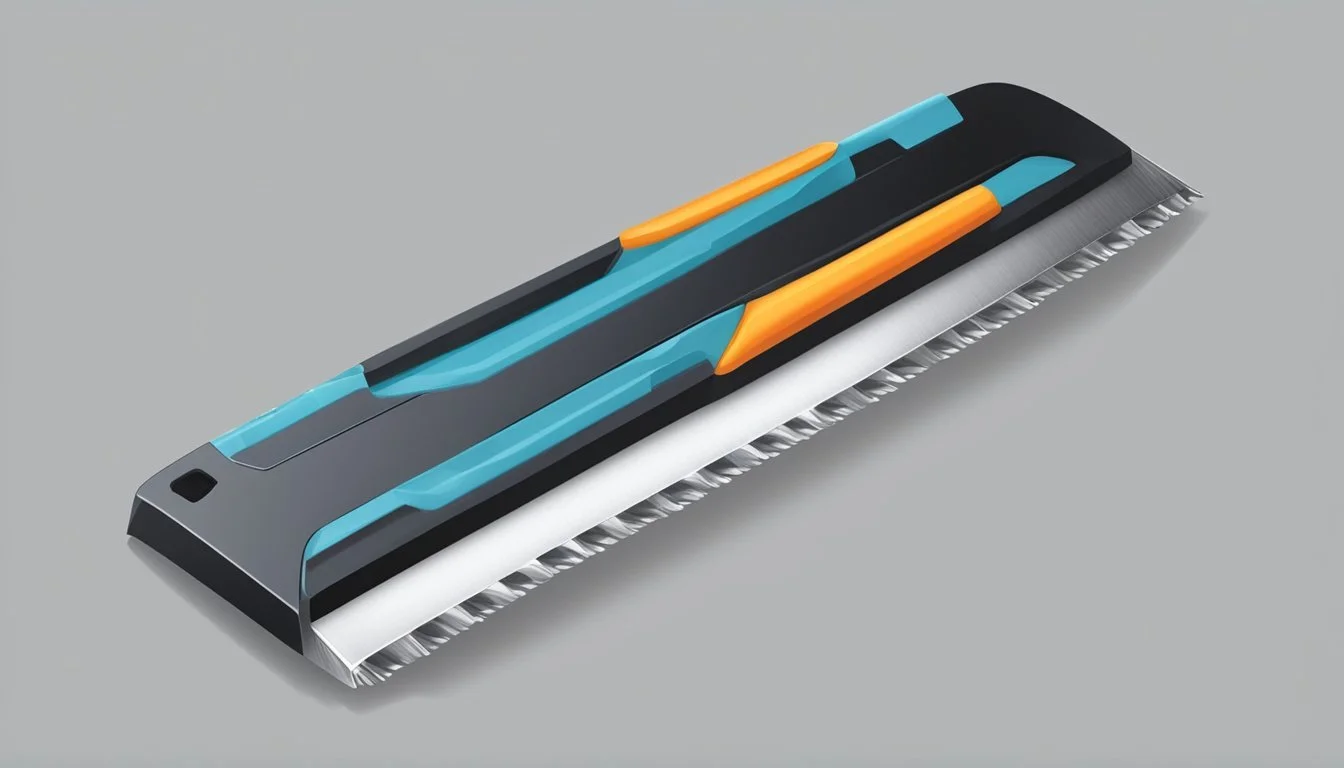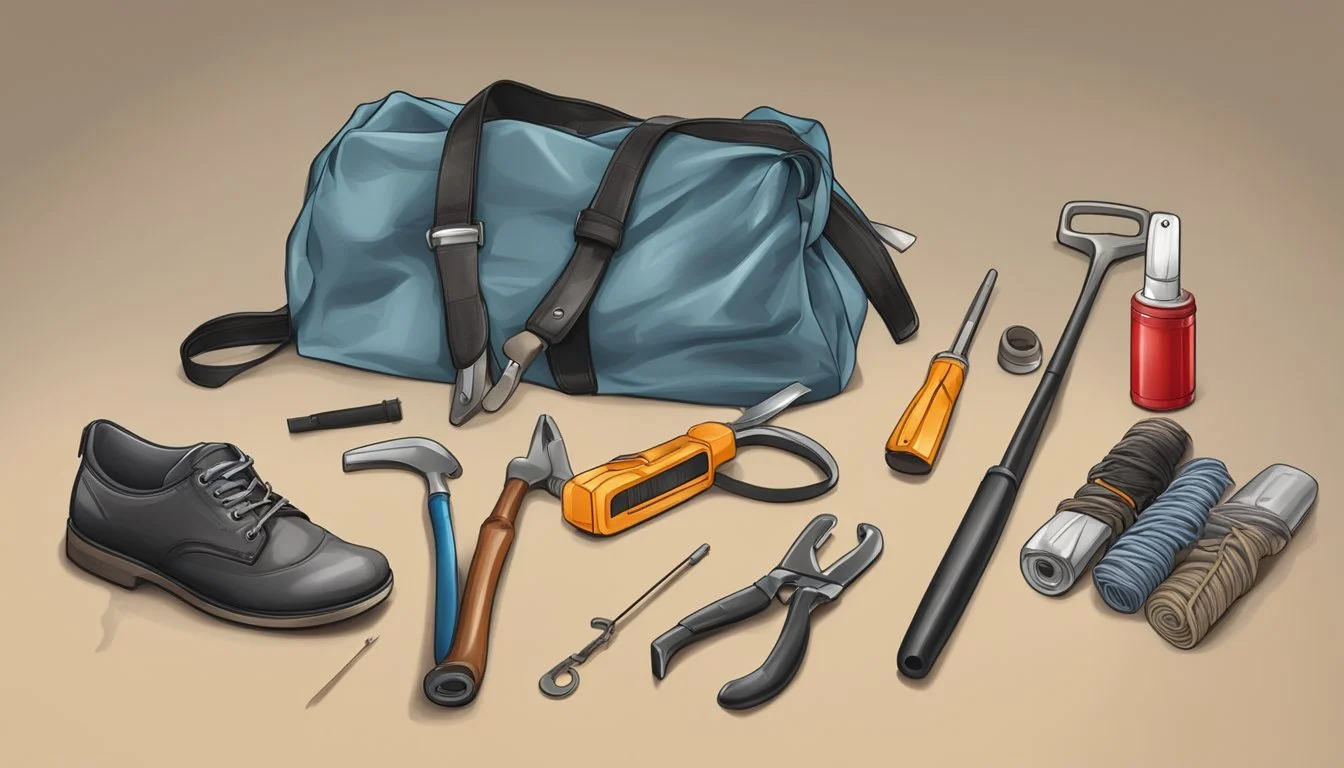Anthony Allen Shore: 6 Everyday Items the Tourniquet Killer Turned into Weapons
Mundane Objects Repurposed for Murder
Anthony Allen Shore, known as the "Tourniquet Killer," terrorized Houston, Texas from 1986 to 2000. His chilling crimes involved the use of everyday objects transformed into deadly weapons, earning him his notorious moniker.
Shore's ability to repurpose common items into instruments of murder demonstrated the dangerous creativity of a serial killer. His crimes shocked the community and baffled law enforcement for years before his eventual capture and conviction. Shore's case serves as a stark reminder of how seemingly innocuous objects can become tools of violence in the hands of a determined criminal.
1) Kitchen Knife
Anthony Allen Shore utilized common kitchen knives as weapons in his crimes. These readily available household items became deadly instruments in his hands.
Kitchen knives were easily accessible to Shore, requiring no special acquisition. Their sharp blades and sturdy handles made them effective for inflicting harm on his victims.
Shore likely chose kitchen knives due to their ubiquity and inconspicuous nature. They could be carried or transported without arousing suspicion.
The use of such ordinary objects as weapons added to the shock and horror of Shore's crimes. It demonstrated how everyday items could be repurposed for sinister intentions.
Forensic evidence from knife wounds helped investigators link Shore's crimes and eventually led to his conviction. The specific characteristics of kitchen knife injuries provided crucial clues for law enforcement.
2) Baseball Bat
Anthony Allen Shore utilized common sports equipment as a weapon in his criminal activities. The baseball bat, typically associated with America's favorite pastime, became a tool of violence in his hands.
Shore kept a baseball bat in his vehicle, ostensibly for self-defense. However, investigators discovered he had used it to threaten and subdue victims during his attacks.
The solid construction and easily grippable handle of a baseball bat made it an effective weapon for Shore. Its presence in his car didn't arouse suspicion, as many people carry sports equipment.
Shore's use of the baseball bat demonstrated his ability to weaponize everyday items. This tactic allowed him to avoid detection and continue his crimes for years before authorities finally apprehended him.
The baseball bat serves as a chilling reminder of how ordinary objects can become dangerous in the wrong hands. Shore's case highlights the importance of recognizing potential threats in unexpected places.
3) Screwdriver
Anthony Allen Shore utilized common household tools in his crimes, including screwdrivers. This everyday item became a sinister weapon in his hands.
Shore employed screwdrivers to inflict pain and torture on his victims. The tool's sharp tip and sturdy construction made it an effective instrument for causing harm.
In some instances, Shore used screwdrivers to threaten and intimidate his targets. The fear induced by this common object amplified the psychological trauma experienced by those he attacked.
Investigators discovered that Shore sometimes incorporated screwdrivers into his signature tourniquet method. He would use the tool to tighten the ligature, increasing the level of control he had over his victims.
Forensic evidence revealed puncture wounds on some of Shore's victims consistent with screwdriver attacks. This physical evidence helped link Shore to multiple crimes and ultimately led to his conviction.
The use of such an ordinary item as a weapon highlights Shore's resourcefulness and willingness to exploit any available object for malicious purposes.
4) Metal Pipe
Anthony Allen Shore utilized common items as weapons in his crimes, including metal pipes. These rigid, cylindrical objects were easily accessible and could inflict severe blunt force trauma.
Shore likely chose metal pipes for their durability and weight. The solid construction allowed for repeated strikes without breaking, while the heft increased the force of impact.
Metal pipes could be obtained from plumbing supplies, construction sites, or scrap yards without arousing suspicion. Their ubiquity made them an inconspicuous weapon choice.
In Shore's hands, these ordinary objects became lethal instruments. The hard metal surface could cause significant injury, especially when aimed at vulnerable areas of the body.
Law enforcement found that Shore's use of everyday items like metal pipes made his crimes more difficult to investigate initially. The lack of a specialized weapon left fewer distinctive clues for investigators to follow.
5) Razor Blade
Anthony Allen Shore used razor blades as one of his weapons during his criminal activities. These small, sharp objects were easily concealable and could inflict severe injuries on victims.
Shore likely obtained razor blades from common household items or purchased them from stores. Their compact size made them convenient for carrying and concealing during his attacks.
Razor blades can cause deep cuts and lacerations, potentially leading to significant blood loss. Shore may have used them to threaten or harm his victims, instilling fear and gaining compliance.
The use of razor blades demonstrates Shore's willingness to employ everyday items as weapons. This adaptability made him a dangerous and unpredictable predator.
Law enforcement found evidence of razor blade usage in some of Shore's crime scenes. This helped investigators link multiple attacks to the same perpetrator.
6) Hammer
Anthony Allen Shore utilized common household tools like hammers as deadly weapons in his crimes. While hammers are typically associated with construction and home improvement, Shore repurposed them for violent ends.
Hammers can inflict blunt force trauma when wielded as a striking weapon. Their solid metal heads and leverage from the handle allow for powerful impacts capable of causing severe injury or death.
Shore likely chose hammers due to their widespread availability and inconspicuous nature. As ordinary tools, they would not arouse suspicion if discovered by others.
The use of everyday items like hammers demonstrates Shore's cunning in weaponizing objects from his surroundings. This tactic may have helped him avoid detection for many years.
Forensic evidence from hammer strikes can sometimes be linked back to a specific tool, aiding investigators. However, the commonness of hammers can also make definitive matching challenging.
Background on Anthony Allen Shore
Anthony Allen Shore, known as the "Tourniquet Killer", was an American serial killer who murdered multiple women and girls in Texas between 1986 and 2000. His crimes went undetected for years until DNA evidence led to his arrest in 2003.
Early Life and Influences
Shore was born on June 25, 1962, in South Dakota. He moved to Houston, Texas as a child. Shore displayed troubling behavior from a young age, including animal cruelty and voyeurism.
He came from a dysfunctional family background. His father was physically abusive, and his mother struggled with mental illness. These early experiences likely contributed to Shore's later criminal behavior.
Shore showed musical talent as a youth, playing trombone in his school band. However, this positive outlet was not enough to counteract his growing violent tendencies.
Criminal History
Shore's known crimes spanned from 1986 to 2000. His first confirmed victim was 14-year-old Laurie Tremblay in 1986. He went on to murder three more females:
Carmen Estrada, 21 (1992)
Diana Rebollar, 9 (1994)
Dana Sanchez, 16 (1995)
Shore's signature was using homemade tourniquets to strangle his victims. He often employed everyday items like bamboo sticks or toothbrushes to tighten the ligatures.
In 2003, DNA evidence linked Shore to Carmen Estrada's murder. This led to his arrest and eventual confession to the other killings. He was executed by lethal injection in Texas on January 18, 2018.
Understanding the Tourniquet Killer's Methods
Anthony Allen Shore, known as the Tourniquet Killer, employed specific psychological tactics and a unique modus operandi in his crimes. His methods involved careful planning and the use of common items as lethal weapons.
Psychological Profile
Shore exhibited traits of antisocial personality disorder and psychopathy. He lacked empathy for his victims and showed no remorse for his actions. Shore's childhood experiences likely contributed to his criminal behavior.
His crimes were sexually motivated, targeting young women and girls. Shore displayed a need for control and dominance over his victims. He often kept trophies from his crimes, a common behavior among serial killers.
Shore's ability to maintain a seemingly normal life alongside his criminal activities demonstrated his capacity for compartmentalization. This trait allowed him to evade detection for many years.
Modus Operandi
Shore's signature method involved using everyday items as weapons, particularly tourniquets. He favored ligatures made from common materials like cords or ropes. Shore would tighten these ligatures using toothbrushes or bamboo sticks.
His attacks were meticulously planned. Shore often stalked his victims before striking, choosing vulnerable targets. He used his charm and persuasion to lure victims into dangerous situations.
Shore's crime scenes were carefully managed to minimize evidence. He disposed of bodies in various locations, making it difficult for investigators to connect the crimes. His methodical approach contributed to his long period of undetected activity from 1986 to 2000.
Legal Proceedings and Conviction
Anthony Allen Shore's crimes came to light in 2003 after DNA evidence linked him to multiple murders. His arrest led to a high-profile trial that exposed the horrific nature of his offenses.
Arrest and Charges
Shore was arrested on October 21, 2003, after a DNA sample taken during a routine traffic stop matched evidence from several unsolved murders. He was charged with the murders of Laurie Tremblay, Maria del Carmen Estrada, Diana Rebollar, and Dana Sanchez.
The charges spanned crimes committed between 1986 and 2000. Shore initially confessed to these four murders, providing investigators with detailed accounts of each crime.
Trial Details
Shore's trial began in October 2004 in Harris County, Texas. Prosecutors presented DNA evidence, Shore's confessions, and testimony from survivors of his attacks.
The defense argued that Shore suffered from mental illness and childhood trauma. However, the prosecution's case proved overwhelming.
On October 21, 2004, after a brief deliberation, the jury found Shore guilty of capital murder in the death of Maria del Carmen Estrada. He was sentenced to death on November 15, 2004.
Shore later pleaded guilty to the murders of Laurie Tremblay, Diana Rebollar, and Dana Sanchez, receiving additional life sentences for these crimes.










